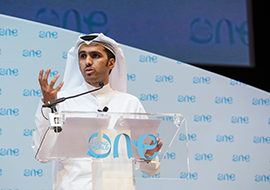With half of the One Young World community living in a country affected by conflict, over three quarters (79%) feel global leaders do not do enough.
How can young people drive the reconciliation process?
- Role of leaders and the international community
- The relationship between dialogue, tolerance and resolution
- Engaging communities at a grass root level
2014 has seen some of the bloodiest conflicts in recent memory. Nearly a quarter of a million have now died in Syria’s long civil war. In Ukraine, conflict has returned to Europe for the first time in decades. From Iraq to Nigeria, extremist groups have taken swathes of territory from the control of nation states, sowing violence and division. Governments are struggling to respond and form new alliances at nation state level. Never has the importance of grass-roots solutions at local, community level been greater.
Many young people are angry. With half of the One Young World community living in a country affected by conflict, over three quarters (79%) feel global leaders do not do enough. The world’s young leaders must grapple with the challenge of how to break down barriers to promote dialogue and reconciliation. 85% of the One Young World community say reconciliation is unsustainable without the involvement of the next generation. Issues fuelling and exacerbating problems of youth unemployment need to be addressed including economic insecurity and terrorism.
